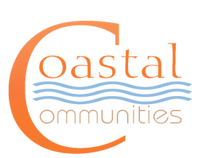h-gac INTERACTIVE MAPPING APPLICATIONS
H-GAC has developed a suite of interactive web mapping applications on a wide variety of topics. These applications are intended for general reference and planning purposes only. Mapping may not reflect on-the-ground conditions. H-GAC makes no further claims as to the accuracy or reliability of the data, and neither assumes, nor will accept liability for their use.
Water Quality Applications
The Regional Flood Information tool provides information on neighborhoods and population vulnerable to potential flooding and hazards. It consolidates data from various Federal and local agencies relevant to recent flooding caused by Hurricane Harvey in the H-GAC region (13 counties).
How's the Water? Each year, H-GAC produces the Basin Highlights Report (BHR), summarizing water quality status and trends for waterways in the four basines monitored by the Clean Rivers Program. This report also provides an overview of the program's outreach activities, and a summary of special projects that use Clean Rivers Program data. The 2019 report is accessible in an easy-to-use, online story map format, and is compatible with tablets and smartphones. The 2019 BHR includes a summary of all waterway segments in the H-GAC Clean Rivers Program region, including waterways in the four coastal counties.
The Water Resources Information Map is an interactive mapping tool displaying H-GAC's Clean Rivers Program professional and volunteer water quality monitoring data. H-GAC works with partner agencies and TST volunteers to collect and analyze data from over 450 monitoring locations throughout the region. This tool is accessible to anyone, from water quality project managers to residents interested in current or historic water quality data in the region.
The Riparian Buffer Tool offers information about riparian buffers, strips of land designed to intercept runoff pollutants such as excess sediment, nutrients, pesticides, pathogens, and other chemical, preventing them from entering waterways and contaminating surface water and shallow groundwater. Visit the Riparian Buffer Tool website to learn more about your watershed, compare your watershed with others in the region, visualize what a buffer will look like on your property, calculate cost estimates, and find agency contact information for your area.
Current On-site Sewage Facility data is available in an interactive OSSF mapping tool. View the locations of permitted systems by age, authorized agent or permitting authority, number of permits per square mile, and likely locations for old or unpermitted OSSFs.
Water Quality Applications
The Regional Flood Information tool provides information on neighborhoods and population vulnerable to potential flooding and hazards. It consolidates data from various Federal and local agencies relevant to recent flooding caused by Hurricane Harvey in the H-GAC region (13 counties).
How's the Water? Each year, H-GAC produces the Basin Highlights Report (BHR), summarizing water quality status and trends for waterways in the four basines monitored by the Clean Rivers Program. This report also provides an overview of the program's outreach activities, and a summary of special projects that use Clean Rivers Program data. The 2019 report is accessible in an easy-to-use, online story map format, and is compatible with tablets and smartphones. The 2019 BHR includes a summary of all waterway segments in the H-GAC Clean Rivers Program region, including waterways in the four coastal counties.
The Water Resources Information Map is an interactive mapping tool displaying H-GAC's Clean Rivers Program professional and volunteer water quality monitoring data. H-GAC works with partner agencies and TST volunteers to collect and analyze data from over 450 monitoring locations throughout the region. This tool is accessible to anyone, from water quality project managers to residents interested in current or historic water quality data in the region.
The Riparian Buffer Tool offers information about riparian buffers, strips of land designed to intercept runoff pollutants such as excess sediment, nutrients, pesticides, pathogens, and other chemical, preventing them from entering waterways and contaminating surface water and shallow groundwater. Visit the Riparian Buffer Tool website to learn more about your watershed, compare your watershed with others in the region, visualize what a buffer will look like on your property, calculate cost estimates, and find agency contact information for your area.
Current On-site Sewage Facility data is available in an interactive OSSF mapping tool. View the locations of permitted systems by age, authorized agent or permitting authority, number of permits per square mile, and likely locations for old or unpermitted OSSFs.
partner interactive mapping applications
Get your community's litter and illegal dumping hotspots on a statewide map to get them adopted for regular cleaning. Trash Free Texas is a simple, map-based tool for local governments to upload places that need to be cleaned. Then residents, organizations, and companies can sign up to adopt and clean those spots. You can help by sharing the following types of data: description, coordinates, type, status and name of locations, and contact information. Please contact Laura Parchman at [email protected] to further discuss adopt-a-spot opportunities.
Galveston Bay Foundation has created the Galveston Bay Action Network (GBAN) application for computer and smartphone. GBAN is a pollution reporting and monitoring app for reporting litter and other sources of pollution across the four counties that touch Galveston Bay (Brazoria, Chambers, Harris, and Galveston Counties). The app is linked to all national, state, and local governmental agencies that are involved with water pollution cleanup and human health monitoring. Pollution sources found in the bay can also be monitored from the app. The interactive map allows for different pollution layers to be selected and viewed.
Galveston Bay Foundation has created the Galveston Bay Action Network (GBAN) application for computer and smartphone. GBAN is a pollution reporting and monitoring app for reporting litter and other sources of pollution across the four counties that touch Galveston Bay (Brazoria, Chambers, Harris, and Galveston Counties). The app is linked to all national, state, and local governmental agencies that are involved with water pollution cleanup and human health monitoring. Pollution sources found in the bay can also be monitored from the app. The interactive map allows for different pollution layers to be selected and viewed.
